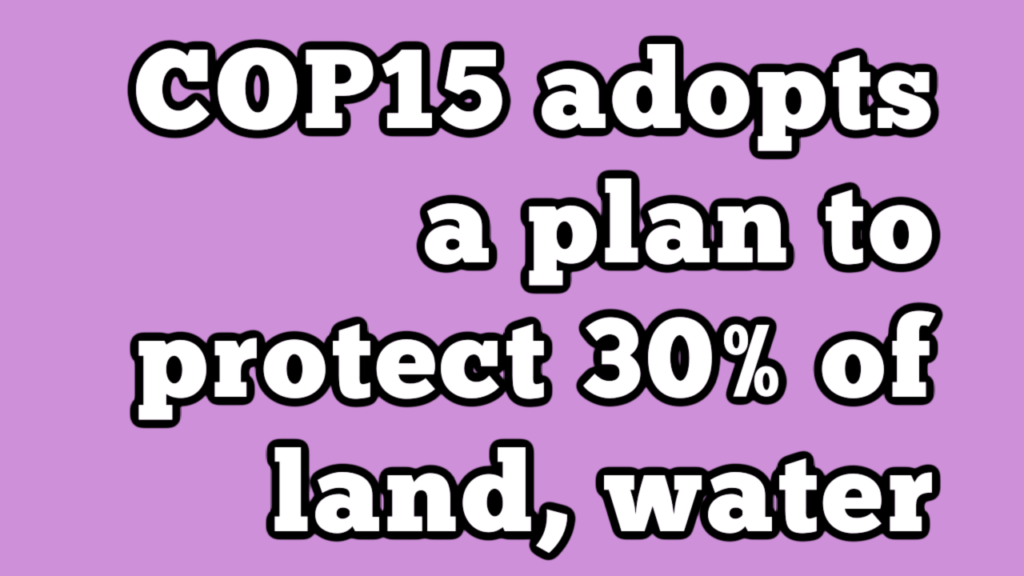COP15 adopts a plan to protect 30% of land, water

Here’s the intro from this Bloomberg Green article:
The threat of a mass extinction of plant and animal species led 195 nations early Monday to agree to protect and restore at least 30% of the Earth’s land and water by 2030. Rich nations committed to pay an estimated $30 billion a year by 2030 to poorer nations through a new biodiversity fund that will be created under the Global Environment Facility, a 30-year-old organization that supports environmental work. The agreement was reached following two weeks of negotiations at the COP15 United Nations Biodiversity Conference in Montreal.
Canada’s environment minister Steven Guilbeault, who was hosting the conference, compared the deal to the UN’s landmark Paris agreement, in which countries committed to keep global temperature increase below 2 degrees Celsius and ideally closer to 1.5C.
Hundreds of individuals from investment institutions, banks and businesses registered to attend the event, and played an unusually outsized but background role in the lead-up to COP15. Financial institutions have come to understand the carnage in nature as an economic failure. The World Economic Forum has estimated that $44 trillion, the equivalent of about half global GDP, is generated in industries dependent on nature, led by construction, agriculture and food. Collapsing ecosystems could take 2.3%, or about $2.7 trillion, off global GDP in 2030, according to the World Bank.
The private sector has already proposed or introduced new financial mechanisms for biodiversity such as debt-for-nature swaps, biocredits and natural capital funds. Yet some initiatives, such as biodiversity offsetting schemes, have been criticized for not being successful in meeting their targets.
The commitment over international flows announced Monday is part of a broader move aimed to invest at least $200 billion annually. The bulk of that funding is assumed to come from countries’ domestic spending on nature protection — a flexible descriptor that might include funds for national parks or agriculture, philanthropy and private capital.
